Effectiveness of Temporary Stream Crossing Closure Techniques Forest Operations Research Highlights
ID
ANR-110NP
Implementing Best Management Practices (BMPs) on Forest Harvesting Operations
Protection of water quality is a critical component of forest harvesting operations. Virginia’s silvicultural water quality law (§10.1-1181.1 through 10.1-1181.7) prohibits excessive sedimentation of streams as a result of silvicultural operations. Virginia’s logging businesses invest substantial resources implementing BMPs to protect water quality. The Virginia Department of Forestry (VDOF) is responsible for enforcing this law and inspects all logging operations to ensure protection of water quality. BMP guidelines offer multiple possible options for practices to minimize erosion and sedimentation and protect water quality. Selecting the most appropriate BMP will depend on specific site conditions, as well as resources available on-site for implementing BMPs. However, research results on BMP implementation can help guide decisions related to BMP implementation for protecting water quality.
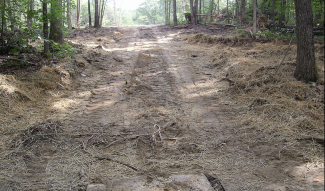
Temporary Stream Crossing Closure Options
Temporary stream crossings are often needed for access to portions of a tract during harvest and are then closed and stabilized after harvest completion. Proper closure of stream crossings is critical because they represent a direct link for erosion from skid trails or roads to enter the stream. Soil that erodes from approaches leading to stream crossings can result in sedimentation if it enters the stream. The focus of Virginia’s silvicultural water quality law is prevention of sedimentation, so stream crossings are an area where proper closure and stabilization are critical. This research focused on evaluating sedimentation in streams as a result of three different options for temporary stream crossing closure BMPs.
Evaluating Stream Crossing Closure Options
Operational stream crossings were evaluated in the Piedmont of Virginia. Stream crossing closure options evaluated included use of “slash” (water bars and logging slash), “mulch” (water bars, seed, lime, fertilizer, and straw mulch), and “mulch + silt fence” (water bars, seed, lime, fertilizer, straw mulch, and silt fence at stream). Each closure method was applied to three different stream crossings for a total of nine separate operational stream crossings that were evalu- ated. Water samples were collected above and below the stream crossings to measure total suspended solids (TSSs) resulting from the stream crossing. Water samples were collected beginning after harvest completion but before BMPs were installed, and were collected daily for one year.
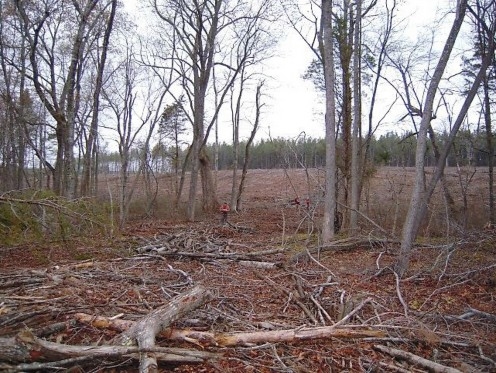
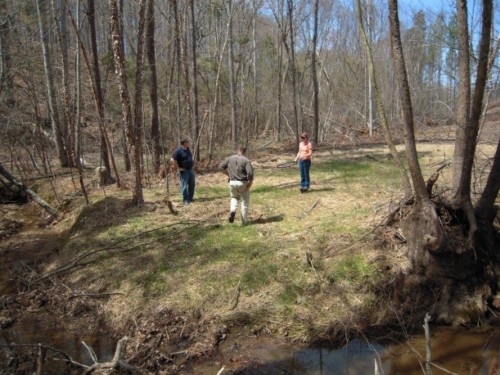
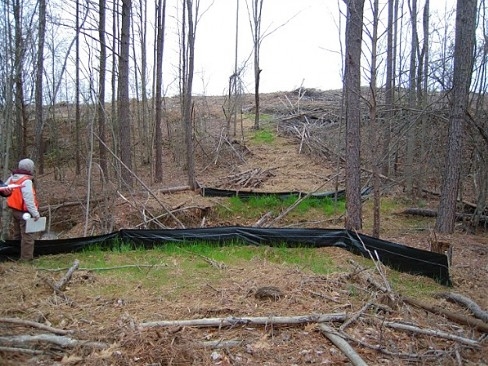
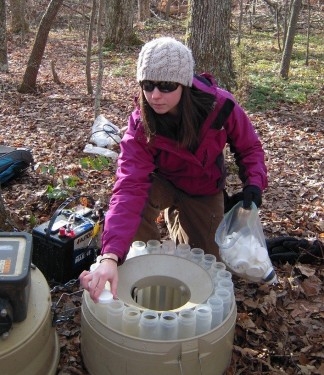
Results
Both slash and mulch treatments were effective at reducing sediment and in most cases resulted in very similar levels of sediment reduction. Both slash and mulch treatments were more effective at reducing sedi- ment than the mulch + silt fence treatment. The mulch + silt fence treatment was the most intensive and costly application of BMPs and might be expected to result in the greatest reduction in sediment. However, silt fence is installed by burying part of the silt fence in a trench. The exposed soil created by installation of the silt fence directly adjacent to the stream channel appar- ently resulted in additional sediment introduced into the stream as a result of the installation process. Slash was the most cost-effective of the treatments. When slash is applied as part of the harvesting operation, it can be effective at reducing sediment and is one of the most cost-effective treatments. For this research project, the most complex and costly BMP installation of mulch + silt fence was the least effective at reducing sediment.
Conclusions and Recommendations
Utilizing slash as a closure method for temporary stream crossings is an effective and low cost method. If operational limitations prevent the use of slash for closure, then seed and mulch (water bars, seed, lime, fertilizer, straw mulch) are also an effective method for preventing sedimentation, although it could be substantially more expensive than slash. The most expensive BMP option evaluated (mulch + silt fence) is not necessarily the best method when the silt fence is installed directly adjacent to the stream channel. Activities which disturb soil next to the stream channel, including trenches for silt fence, should be avoided when possible.
For Additional Information on BMP Implementation:
The Virginia Department of Forestry (www.dof.virginia.gov) is responsible for inspecting logging opera- tions in Virginia. All commercial timber harvests are inspected for compliance with the Silvicultural Water Quality Law. The VDOF’s complete handbook for BMPs for water quality is available online at http://www.dof.virginia.gov/water/index-BMP-Guide.html .
For specific questions relating to implementation of BMPs on harvest sites, please contact your local VDOF personnel. A list of VDOF personnel can be found online http://www.dof.virginia.gov/aboutus/contact-us.html or by calling their central office at 434-977-6555.
Additional information on this research can be found in the following publication:
Wear, L.R., W.M. Aust, M.C. Bolding, B.D. Strahm, and C.A. Dolloff. 2013. “Effectiveness of best management practices for sediment reduction at operational forest stream crossings.” Forest Ecology and Management, 289(1):551-561.
This publication was funded, in part, with an integrated, internal competitive grant from Virginia Agricultural Experiment Station, Virginia Cooperative Extension, and the College of Agriculture and Life Sciences at Virginia Tech.
Virginia Cooperative Extension materials are available for public use, reprint, or citation without further permission, provided the use includes credit to the author and to Virginia Cooperative Extension, Virginia Tech, and Virginia State University.
Virginia Cooperative Extension is a partnership of Virginia Tech, Virginia State University, the U.S. Department of Agriculture, and local governments. Its programs and employment are open to all, regardless of age, color, disability, sex (including pregnancy), gender, gender identity, gender expression, genetic information, ethnicity or national origin, political affiliation, race, religion, sexual orientation, or military status, or any other basis protected by law.
Publication Date
December 13, 2019



